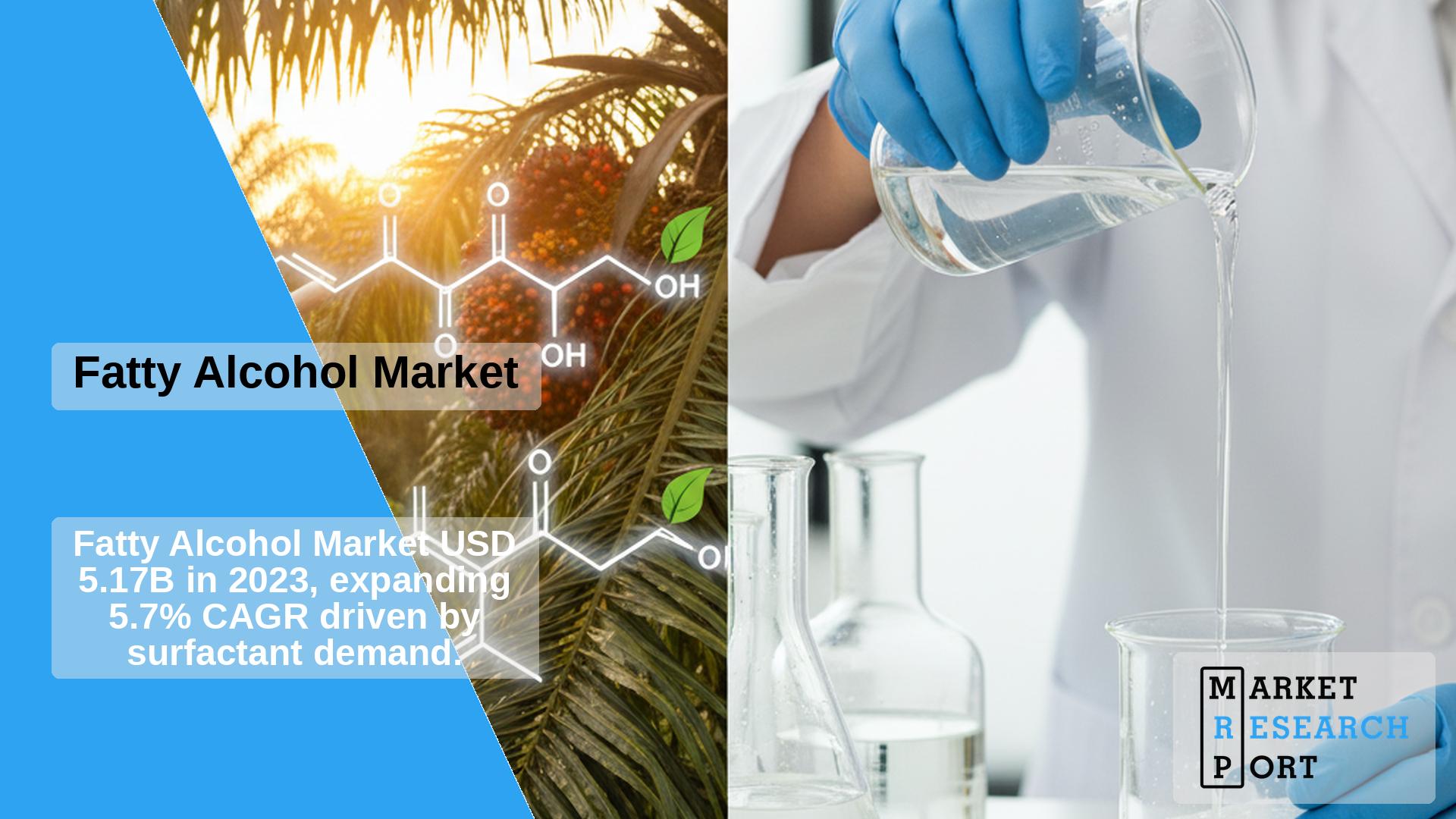
The global fatty alcohol market was valued at approximately USD 5.17 billion in 2023 and is projected to reach USD 8.07 billion by 2030, growing at a compound annual growth rate (CAGR) of 5.7% from 2024 to 2030. Market growth is driven by increasing demand for surfactants, rising consumption of bio-based products, and expanding applications across personal care, industrial, and household sectors. Fatty alcohols, known for their biodegradability, serve as sustainable alternatives to petrochemical-derived products.
The market growth is fueled by rising demand for surfactants in personal care products such as shower gels, conditioners, lipsticks, and antiperspirants. Increasing environmental awareness among consumers and manufacturers encourages preference for natural, sustainable products derived from oleochemical feedstocks. Availability of raw materials like palm oil and growing consumption in emerging economies, particularly in Asia Pacific, drive additional growth. Fatty alcohols are used extensively in personal care, pharmaceutical, lubricant, and household cleaning industries for their emulsifying, thickening, and moisturizing properties.
The ongoing shift towards sustainability promotes manufacture and adoption of eco-friendly, bio-based fatty alcohols. These materials are reusable and have fewer side effects, making them highly attractive to the personal care and pharmaceutical sectors. Overall, market drivers include increased surfactant demand, eco-conscious product preferences, raw material accessibility, and broader industry applications.
Long-chain fatty alcohols, containing 14 to 22 carbon atoms, accounted for the largest market revenue share of 38.9% in 2023. Their applications as surfactants, emulsifiers, and emollients in personal care and industrial cleaners support strong demand. Preference for natural and sustainable ingredients boosts adoption of long-chain fatty alcohols extracted from renewable plant and animal sources.
The pure and mid-cut segment is expected to grow at the fastest CAGR of 6.4% during the forecast period. Growth stems mainly from widespread production of Sodium Laureth Sulfate (SLES) and Sodium Lauryl Sulfate (SLS), critical ingredients for soaps, shampoos, and toothpaste.
The soaps and detergents segment held the highest market share in 2023, supported by rising living standards and increasing hygiene focus in developing countries. The growing need for household and industrial cleaning products further propels this segment.
Personal care is projected to witness the fastest growth, driven by higher consumer disposable incomes that fuel demand for lotions, essential oils, shampoos, and other products leveraging the surfactant and moisturizing benefits of fatty alcohols.
Asia Pacific accounted for 40.1% of the global fatty alcohol market in 2023, fueled by strong demand across surfactants, cosmetics, personal care, and pharmaceutical sectors, notably in China, India, and Japan. Rising population growth further increases consumption of cleaning products.
China dominated the Asia Pacific fatty alcohol market with a 37.0% share, buoyed by two decades of steady economic growth, robust industrial output, and expanding consumer spending.
North America’s market is set for robust growth, supported by increased demand for personal care and cleaning products and greater adoption of environmentally friendly ingredients. Regulatory push supports the transition to plant-derived and renewable fatty alcohols.
The U.S. fatty alcohol market benefits from well-developed oleochemical infrastructure, active government incentives, and industry leaders integrating bio-based fatty alcohols into consumer products to meet sustainability goals.
Europe’s market is forecast for rapid growth, driven by stringent regulations on petrochemical ingredients and expanding deployment of bio-based fatty alcohols across industries.
Germany represents a significant market due to its robust personal care and consumer goods industries, coupled with strict environmental regulations fostering increased use of natural fatty alcohols.
Leading companies include Univar Solutions, BASF, KLK Oleochemicals, Wilmar International, and others. These firms actively pursue acquisitions, product launches, and partnerships to strengthen market presence and capitalize on increasing demand for bio-based and sustainable fatty alcohols.
| Report Attribute | Details |
|---|---|
| Market Size (2024) | USD 5.46 billion |
| Forecasted Market Size (2030) | USD 8.07 billion |
| Growth Rate (CAGR) | 5.7% (2024-2030) |
| Base Year | 2023 |
| Historical Data | 2018-2022 |
| Forecast Period | 2024-2030 |
| Units | USD million, CAGR |
| Report Coverage | Revenue forecast, competitive landscape, growth drivers and trends |
| Segments Covered | Type, Application, Region |
| Regional Scope | North America, Europe, Asia Pacific, Latin America, Middle East and Africa |
| Countries Covered | United States, Canada, Mexico, Germany, United Kingdom, France, Italy, Spain, China, India, Japan, South Korea |
| Key Players | Univar Solutions, BASF, KLK Oleochemicals, Wilmar International, and others |